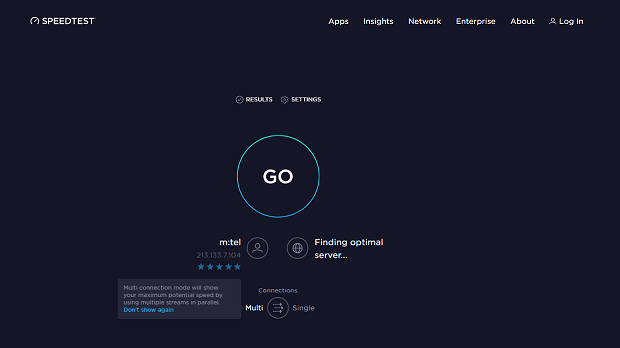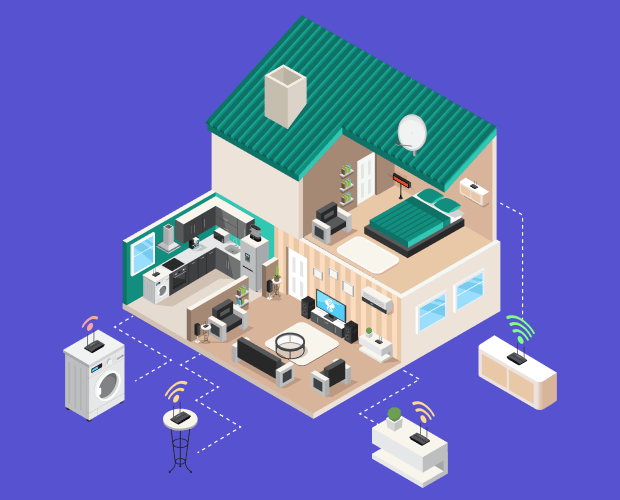It’s not that we don’t enjoy responding to them, but it bothers us to see so many internet users unable to play online games, watch Netflix, browse the web, or even use email to communicate with friends, family, and colleagues.
So, we’ve decided to do something about it. In this article, we explain the most common causes of slow internet and provide multiple fixes to help you enjoy your internet connection to its maximum capacity.
If you’re paying for fast internet, it’s only natural to get upset when you’re not getting it. There are many factors that influence your internet speed, some less obvious than others. But before we get to them, you should first do a simple speed test so you have concrete data for comparison.
Speedtest by Ookla is a popular web-based internet speed test that lets you test your internet connection bandwidth to locations around the world:
| 1. Go to: http://www.speedtest.net/. |
| 2. Close all downloads and streaming applications before you proceed. |
| 3. Click the large “Go” button in the middle of the page. |

4. Wait for the test to finish and save the result.
|
We highly recommend you repeat the test at least one more time. Many people don’t hesitate to contact their ISP and ask, “Why is my internet so slow right now?” only to find out that it was just a temporary problem that has already resolved itself on its own.
Some internet speed fixes are deceptively simple to implement, but that doesn’t mean you shouldn’t approach them just like a professional network administrator would.
With NetSpot, an easy-to-use macOS and Windows application for wireless site surveys, Wi-Fi analysis, and troubleshooting, you can instantly gather heaps of information on nearby wireless networks and visualize your own wireless network to see areas of signal weakness, called dead zones.
Where you place your router is arguably the most important factor that determines your internet speed. The further away from your router you get, the weaker the Wi-Fi signal, so you should find a place from where your router can cover your whole house or apartment and not just a room or two. NetSpot’s survey mode can help you see which rooms are covered with a strong Wi-Fi signal and which are barely covered at all.

It’s also important to avoid placing your router close to sources of electromagnetic fields, such as the microwave or various Bluetooth devices. Microwave ovens operate at a frequency of 2.45 GHz, which puts them dangerously close to the 2.4 GHz Wi-Fi band. If possible, put your router on a shelf, instead of just leaving it on the ground or hiding it behind furniture.
Bandwidth hogs are applications that connect to the internet and take up all available bandwidth by downloading or uploading data. Some of the biggest culprits include file-syncing services like OneDrive, Google Drive, and Dropbox, but BitTorrent clients, digital distribution platforms like Stream, and even some cloud-based anti-malware solutions are often to blame.

In most cases, you can limit how much bandwidth these applications are allowed to use. Of course, you can always simply kill them.
Have you tried turning your router off and on again? If not, you definitely should. You would be surprised by just how many problems with slow internet can be solved with the mighty power button. Of course, even the power button has its limits, which is when careful troubleshooting is in order. Most router manufacturers have troubleshooting guides on their websites, and that’s where you should start.

A DNS server is a server that contains a database of public IP addresses and their associated hostnames. Its typically supplied by your internet service provider, which may use it to restrict access to certain websites. When a DNS server becomes overloaded, it takes ages for websites to load.

Fortunately, most routers let you switch to a different DNS, such as Google Public DNS, a free Domain Name System service offered to Internet users worldwide by Google, or OpenDNS, a service that extends the Domain Name System by adding features such as phishing protection and optional content filtering in addition to DNS lookup.
At the end of the day, your internet speed depends on your internet service provider just as much as it depends on you. There’s nothing you can do about a problem with your ISP’s network configuration other than complain.

If you’ve gone through all the steps described above and have a speed test to prove that your internet speed is much slower than it should be, don’t hesitate and make the call. Some ISPs even provide chat and email support.
It’s hard to find someone who hasn’t at least once asked themselves, “Why is my internet speed so slow?” Even though we very much depend on it, the internet is not nearly as reliable as local networks, with Internet outages happening fairly frequently.
The good news is that there are many things you can do to fix your slow internet, and some of them take just a few seconds to implement. In this article, we’ve provided the top 5 ways to fix slow internet and explained why you should use NetSpot as your guide.